Baruntse Expedition: Complete Guide, Cost and Permits Detail
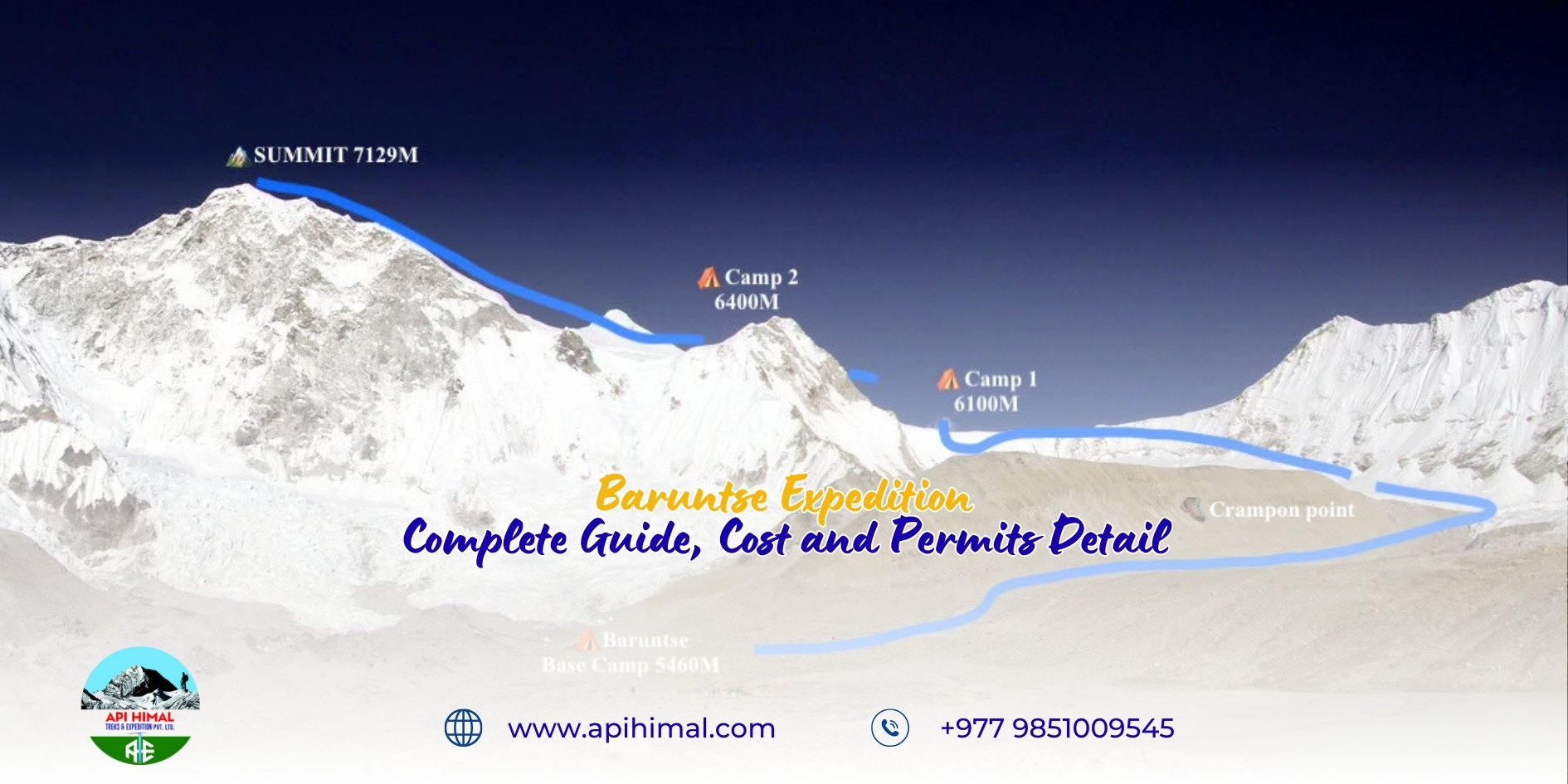
Here on this blog we gives you the full information about the Baruntse Expedition: Complete Guide, Cost and Permits in details.
The Baruntse Expedition is an awe-inspiring mountaineering adventure in the heart of the Nepal Himalayas, offering climbers the chance to ascend one of the most beautiful yet relatively less-crowded peaks. Standing tall at 7,129 meters, Baruntse lies in the eastern region of Nepal, nestled among towering giants like Mount Everest, Makalu, and Lhotse. Its strategic location in the remote Khumbu region makes it an ideal destination for experienced mountaineers seeking both challenge and serenity. First climbed in 1954 by Colin Todd and Geoff Harrow, the peak has since drawn adventurous spirits from across the globe, not only for the thrill of conquering a technical 7,000-meter peak but also for the breathtaking natural landscapes and cultural immersion along the way.
The journey to Baruntse typically begins with a scenic flight from Kathmandu to Lukla, the gateway to the Khumbu Valley. From here, climbers trek through some of the most iconic trails in Nepal, passing Sherpa villages, lush forests, and high alpine valleys. The trek itself is a rewarding prelude to the expedition, as it provides gradual acclimatization and offers glimpses of Himalayan giants that dominate the skyline. The trail often passes through the stunning Hinku Valley, which is known for its unspoiled beauty and fewer crowds compared to the busier Everest Base Camp route. This approach gives climbers a chance to enjoy the peaceful natural surroundings while preparing physically and mentally for the demanding climb ahead.
Baruntse is often considered one of the more achievable peaks in the 7,000-meter range, but that does not mean it is easy. The climb demands a high level of fitness, technical mountaineering skills, and previous experience at high altitudes. The route to the summit involves navigating crevassed glaciers, steep snow slopes, and challenging ice sections. The technical crux of the climb is the steep 50-degree ice wall just below the summit ridge, which requires precision and strong rope-handling skills. Climbers must also tackle corniced ridges and variable weather conditions, making adaptability and strong teamwork essential. For many, the successful ascent of Baruntse becomes a stepping stone to higher 8,000-meter expeditions, as the mountain provides the perfect training ground in both altitude and technical climbing.
The base camp of Baruntse is typically set near Panch Pokhari, a sacred area known for its cluster of five holy lakes. This serene location provides an inspiring backdrop for climbers as they prepare for the ascent. Above base camp, teams establish several higher camps on the mountain to support a safe and staged climb. Camp I is often positioned above the glacier, followed by Camp II on the steep snow slopes, and in some expeditions, Camp III is established closer to the summit ridge, depending on conditions. The use of fixed ropes, ladders, and proper climbing equipment is critical on this mountain, and professional guiding support can make the difference between success and failure.
Weather is one of the most unpredictable and decisive factors on Baruntse. Climbers usually attempt the peak during the spring (April–May) and autumn (September–November) seasons, when conditions are most stable. Even then, sudden snowstorms, high winds, and freezing temperatures can create serious hazards. Patience and flexibility in the schedule are crucial, as summit windows are often narrow and climbers must be prepared to adapt plans accordingly.
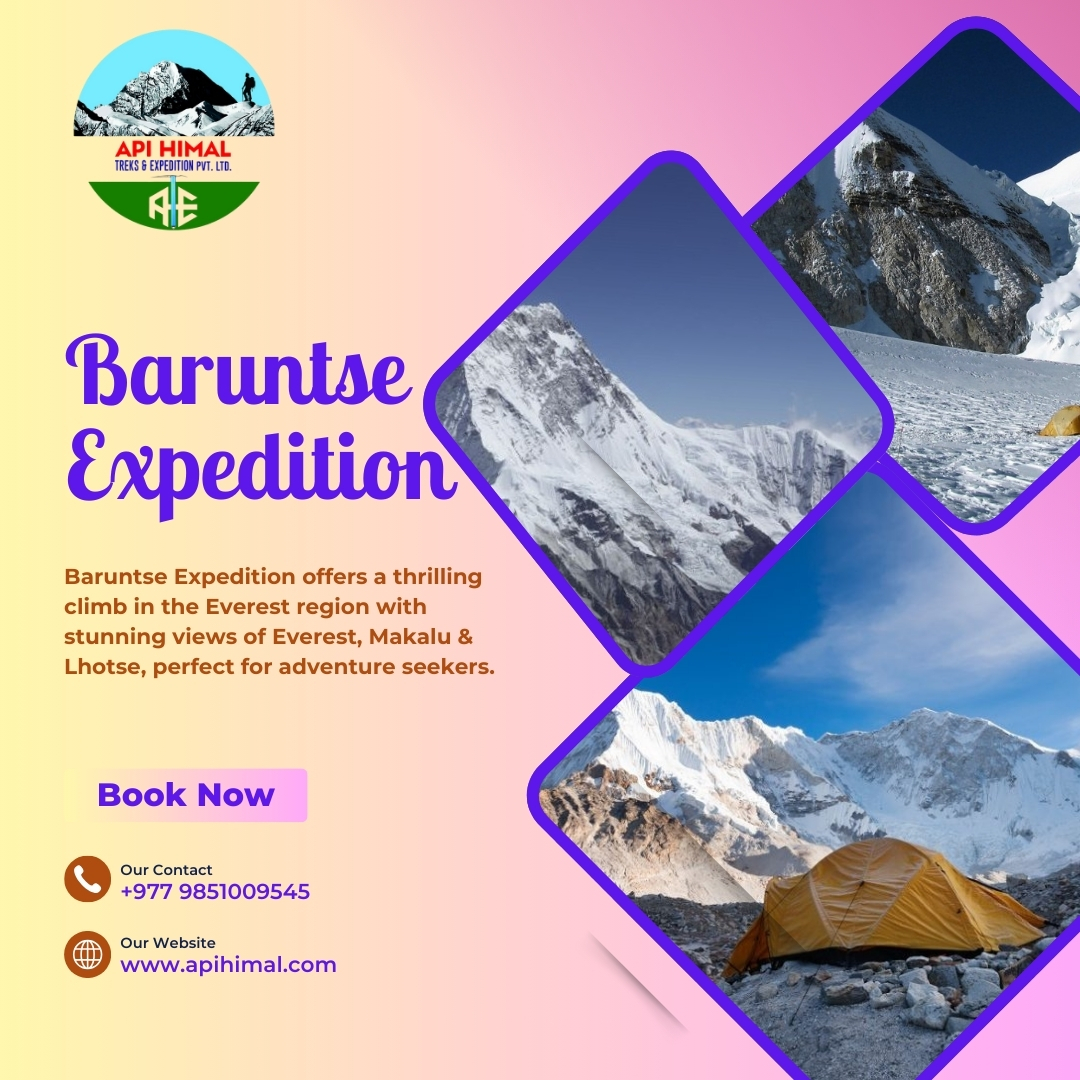
Beyond the physical and technical challenges, the Baruntse Expedition is also a deeply cultural and spiritual journey. The Khumbu region is home to the Sherpa people, renowned for their resilience, hospitality, and rich traditions. Along the trekking route, climbers often pass Buddhist monasteries, prayer flags, and chortens that reflect the deep spiritual connection the locals have with the mountains. Participating in these cultural experiences adds depth to the adventure, making the expedition more than just a physical conquest—it becomes a holistic journey of discovery and connection.
The rewards of reaching the summit of Baruntse Expedition are immeasurable. From the top, climbers are treated to panoramic views of some of the most iconic Himalayan peaks, including Everest, Makalu, Lhotse, and Ama Dablam. The sense of accomplishment is magnified by the solitude and purity of the mountain, far removed from the crowds often seen on more popular routes. It is not just the summit that makes the expedition worthwhile, but the entire journey—from the first steps in the lush valleys to the challenging climbs on ice and snow.
For many mountaineers, Baruntse represents the perfect balance between accessibility and difficulty. It is not as commercially crowded as Everest or other trekking peaks, yet it provides a genuine high-altitude experience that tests endurance, technical ability, and determination. The expedition demands respect for the mountain, careful preparation, and strong commitment, but in return, it offers one of the most rewarding climbing experiences in the Himalayas. Whether viewed as a training ground for future 8,000-meter climbs or as a once-in-a-lifetime achievement in itself, the Baruntse Expedition remains a pinnacle of Himalayan adventure.
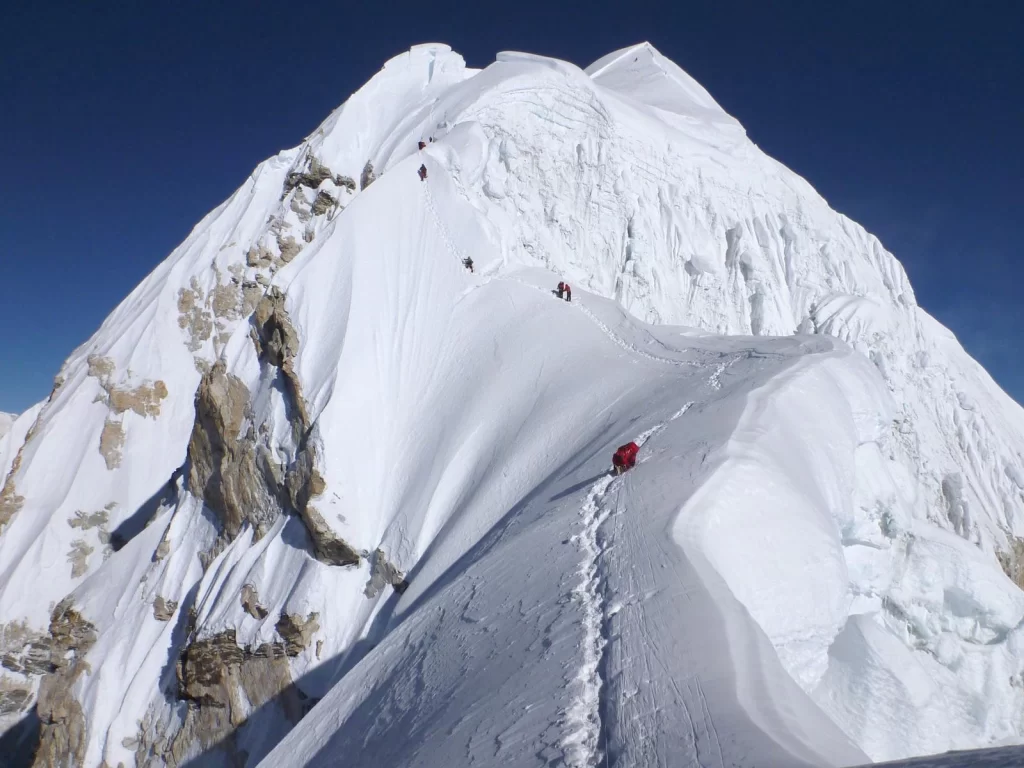
Major Highlights of Baruntse Climbing Expedition in Nepal
One of the greatest appeals of the Baruntse Expedition is the combination of thrilling mountaineering challenges, remote natural beauty, and cultural encounters that together create an unforgettable adventure. While Baruntse is not as frequently attempted as some of the more commercial peaks in the Himalayas, it offers a wide range of highlights that make it highly rewarding for experienced climbers.
Magnificent Location in the Heart of the Himalayas
Baruntse sits in a spectacular location, surrounded by some of the world’s highest and most iconic peaks. From the summit, climbers enjoy panoramic views of Mount Everest, Makalu, Lhotse, and Ama Dablam, among others. This unique vantage point provides one of the most breathtaking high-altitude landscapes in Nepal, giving a sense of standing at the very center of the Himalayas.
Challenging but Achievable 7,000-Meter Peak
At 7,129 meters, Baruntse is considered one of the more approachable peaks in the 7,000-meter range. While it presents technical challenges such as steep ice slopes, crevassed glaciers, and knife-edge ridges, the mountain is still achievable for well-prepared climbers with prior high-altitude and alpine experience. It is often seen as an excellent stepping stone for mountaineers aiming to progress toward 8,000-meter giants like Everest or Makalu.
Less Crowded and Remote Experience
Unlike Everest or other trekking peaks that attract large numbers of climbers, Baruntse offers a quieter and more remote climbing experience. The routes and base camp are less congested, allowing climbers to enjoy a sense of solitude and immersion in pristine Himalayan landscapes. This remoteness adds to the sense of adventure, making the climb feel like a true exploration rather than a commercialized expedition.
Scenic and Diverse Approach Trek
The approach to Baruntse usually takes climbers through the Hinku Valley, one of Nepal’s most beautiful and unspoiled trekking regions. The trail winds through rhododendron forests, alpine meadows, glacial valleys, and traditional Sherpa villages. Trekkers also pass landmarks like the sacred Panch Pokhari (five holy lakes), which provide a culturally enriching aspect to the journey. This trek allows for gradual acclimatization while showcasing the diversity of Nepal’s natural beauty.
Rich Sherpa Culture and Spirituality
The Khumbu and Hinku valleys are deeply tied to Sherpa culture and Buddhism. Along the trail, climbers encounter prayer flags fluttering in the wind, mani walls carved with sacred mantras, and centuries-old monasteries. Engaging with local Sherpa guides and porters adds depth to the expedition, as climbers gain firsthand knowledge of traditions, resilience, and the spiritual connection the locals share with the mountains.
Technically Engaging Climbing Sections
Baruntse’s climbing route provides a perfect balance between technical challenges and rewarding ascents. The most famous section is the steep 50-degree ice wall below the summit ridge, which requires the use of fixed ropes and strong mountaineering techniques. Corniced ridges and glacier crossings add further technical interest, giving climbers the opportunity to refine their alpine skills in a demanding but achievable setting.
Sacred and Serene Base Camp Setting
The base camp near Panch Pokhari offers not only logistical convenience but also a serene and spiritual environment. The five lakes are considered sacred by local communities, and their beauty provides a peaceful backdrop for acclimatization and preparation. Spending time in this area gives climbers both physical rest and mental inspiration before ascending higher camps.
Stunning Summit Rewards
Reaching the summit of Baruntse is the crowning achievement of the expedition. The breathtaking views from the top include a sweeping panorama of Everest, Lhotse, Makalu, Cho Oyu, and countless other Himalayan peaks. The sense of accomplishment is profound, especially given the mountain’s technical challenges and remote nature. Climbers often describe the summit experience as one of the most rewarding of their mountaineering careers.
Perfect Training Ground for Higher Peaks
Baruntse is often chosen by mountaineers as a training ground for 8,000-meter peaks. The altitude, technical ice sections, and overall expedition structure prepare climbers for the rigors of higher Himalayan ascents. Many successful Everest climbers have first tested their skills on Baruntse, making it a valuable milestone in a mountaineer’s progression.
Balance of Adventure and Safety
Though challenging, Baruntse is considered safer compared to some other 7,000-meter peaks due to its relatively straightforward access and manageable climbing hazards. With proper preparation, guided support, and acclimatization, it strikes a balance between adventure and safety, making it attractive to climbers who wish to push their limits without venturing into extreme danger.
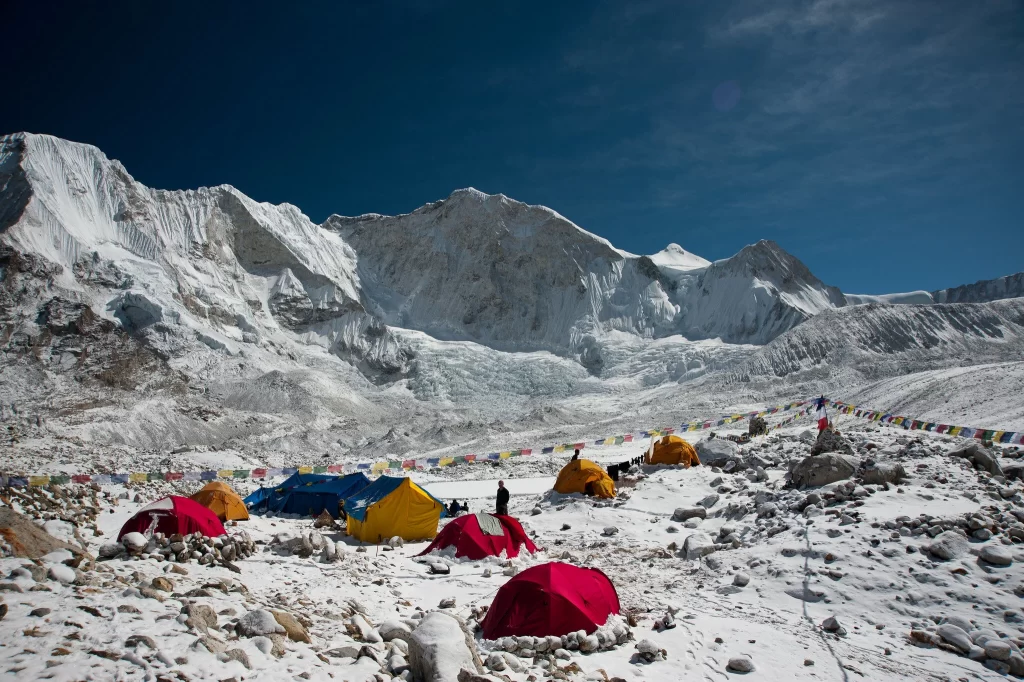
How Hard is Climbing Baruntse ?
Climbing Baruntse (7,129m) is considered moderately difficult compared to other 7,000-meter peaks in Nepal. It is more challenging than trekking peaks like Island Peak or Mera Peak, but less extreme than 8,000-meter giants such as Everest or Makalu. The mountain demands a good balance of physical endurance, technical climbing ability, and high-altitude experience.
Main Difficulties of Baruntse
1. High Altitude (7,129m)
The altitude itself is one of the biggest challenges. Thin air above 6,000m makes every step exhausting, and climbers face risks of altitude sickness, headaches, or fatigue if they don’t acclimatize properly. The summit push is especially demanding, requiring great stamina and mental determination.
2. Technical Ice and Snow Climbing
While the lower sections involve glacier travel, the higher slopes introduce steep ice walls and mixed terrain. The steepest section is the 50° ice wall below the summit ridge, where climbers must ascend using fixed ropes, crampons, and ice axes. Knife-edge corniced ridges near the summit add further difficulty and exposure, demanding careful rope work and balance.
3. Glacier and Crevasse Hazards
Baruntse has several heavily crevassed glaciers that must be carefully navigated. This requires rope teams, ladder crossings in some places, and constant awareness of snow conditions. Falling into a hidden crevasse is a major risk without proper technique and guidance.
4. Weather and Unpredictability
The Himalayan weather is a big challenge. High winds, sudden snowstorms, and whiteout conditions can occur, making climbing dangerous. Even in the best climbing seasons (spring and autumn), summit windows are short and uncertain.
5. Long and Remote Approach
Getting to Baruntse Base Camp involves a long trek through the Hinku Valley, which is beautiful but remote. Unlike Everest Base Camp, where facilities are more developed, Baruntse feels wilder and less supported. This remoteness adds difficulty in terms of logistics and emergency response.
6. Physical Endurance
The expedition lasts about 30–35 days, including acclimatization, trekking, and climbing. Carrying loads, enduring long days on steep snow and ice, and maintaining energy in harsh cold conditions all test physical and mental strength.
Who Can Climb Baruntse?
- Experienced climbers who have already summited peaks above 6,000m (like Island Peak, Lobuche East, or Mera Peak).
- Those with technical skills in ice climbing, rope management, and glacier travel.
- Mountaineers aiming to train for 8,000m peaks often use Baruntse as a stepping stone.
Difficulty Summary of Baruntse Expedition!
- Altitude: Very High (7,129m – challenging but not extreme like 8,000m peaks).
- Technical Level: Moderate to Hard (steep ice walls, crevasses, ridges).
- Physical Demand: High (requires excellent fitness and endurance).
- Overall: Harder than trekking peaks, easier than 8,000m climbs.
In short: Climbing Baruntse Expedition is tough, technical, and demanding, but achievable for experienced mountaineers. It’s a perfect test for those who want to move beyond trekking peaks and prepare for the world’s highest mountains.
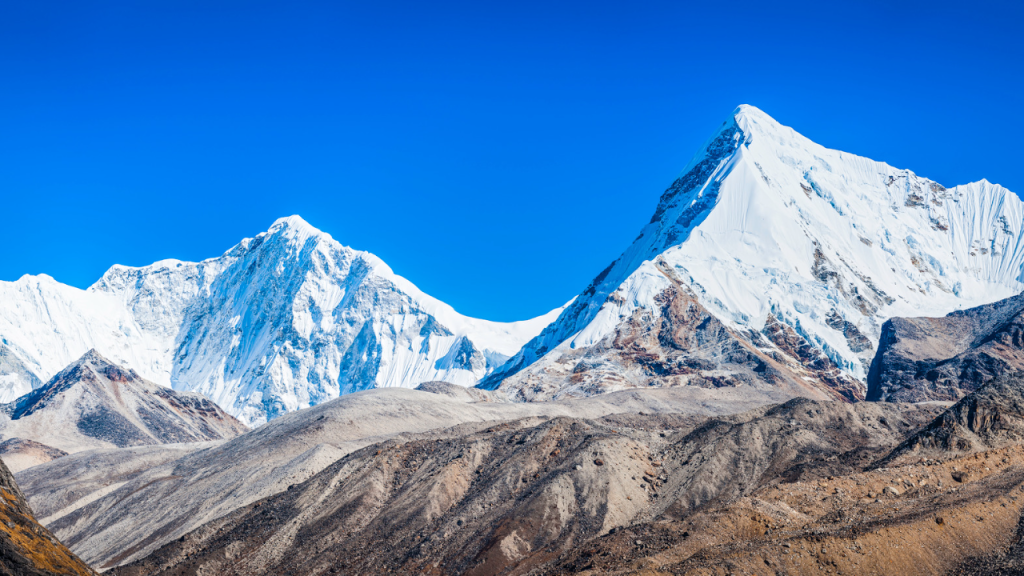
Comparison of Baruntse’s Difficulty vs Island Peak, Mera Peak, and Everest
1. Altitude
- Mera Peak (6,476m): High altitude but non-technical; main challenge is thin air and long summit day.
- Island Peak (6,189m): Lower altitude than Mera, but harder due to technical ice/snow climbing.
- Baruntse (7,129m): Considerably higher, entering the “true expedition peak” zone; altitude stress is major.
- Everest (8,848m): Extreme altitude; oxygen supplementation required for most climbers.
2. Technical Difficulty Comparison of Baruntse’s Difficulty vs Island Peak, Mera Peak, and Everest
- Mera Peak: Mostly a trekking peak; involves glacier walk with crampons, minimal rope use.
- Island Peak: Steep headwall, crevasse navigation, ladder crossings; requires solid mountaineering skills.
- Baruntse: Demanding — 50° ice wall, crevasses, knife-edge ridges; requires advanced rope and ice-climbing ability.
- Everest: Combination of high-altitude technical sections (Khumbu Icefall, Hillary Step/Lhotse Face), but heavily fixed with ropes and ladders by Sherpa teams.
3. Duration & Commitment
- Mera Peak: ~18–20 days expedition.
- Island Peak: ~17–19 days (often combined with EBC trek).
- Baruntse: ~30–35 days (long trek, acclimatization, multiple high camps).
- Everest: ~60+ days (extensive acclimatization, long summit push, weather waiting).
4. Physical Fitness Requirement
- Mera Peak: Strong trekkers with moderate fitness can succeed.
- Island Peak: Requires good endurance and climbing fitness; more demanding than Mera.
- Baruntse: High endurance, strength, and technical preparation needed; a serious climb.
- Everest: Peak fitness, long-term preparation, and mental resilience essential.
5. Risk Factors
- Mera Peak: Minimal technical risk; main danger is altitude sickness.
- Island Peak: Risks from crevasses, avalanches, and falls on steep ice.
- Baruntse: High risk due to remoteness, crevasses, avalanches, and technical sections.
- Everest: Extreme risks — altitude, exhaustion, weather, icefall collapse, crowding.
6. Accessibility & Remoteness
- Mera Peak: Remote but relatively straightforward trek in Hinku Valley.
- Island Peak: Located near Everest Base Camp trail; good access.
- Baruntse: Remote and isolated; logistics and rescue more difficult.
- Everest: Well-established route with maximum infrastructure but very crowded.
7. Who Should Attempt?
- Mera Peak: Strong trekkers looking for their first high Himalayan climb.
- Island Peak: Beginner climbers wanting a taste of technical mountaineering.
- Baruntse: Experienced mountaineers with previous 6,000m+ climbs and technical training.
- Everest: Only for highly experienced climbers with prior 7,000m expeditions (Baruntse often used as training).
- Mera Peak → Best for trekkers stepping into mountaineering.
- Island Peak → First technical climbing challenge in Nepal.
- Baruntse → A serious 7,000m climb: harder, remote, and technical — an excellent training peak for Everest.
- Everest → The ultimate challenge with extreme altitude and risks, requiring maximum commitment.
Baruntse vs Island Peak, Mera Peak & Everest – Difficulty Comparison
| Feature | Mera Peak (6,476m) | Island Peak (6,189m) | Baruntse (7,129m) | Everest (8,848m) |
|---|---|---|---|---|
| Altitude | High but manageable; main issue is acclimatization | Lower than Mera but combined with technical sections | Much higher – serious altitude stress above 7,000m | Extreme “death zone” altitude; oxygen required |
| Technical Difficulty | Mostly trekking peak; simple glacier walk | Steep ice headwall, ladders, crevasses | Demanding: 50° ice wall, knife-edge ridge, glacier crossings | Highly technical at altitude (Khumbu Icefall, Lhotse Face, Hillary Step) |
| Duration | ~18–20 days | ~17–19 days (often with EBC trek) | ~30–35 days (remote, multi-camp) | ~60+ days (long acclimatization & summit push) |
| Fitness Required | Strong trekking fitness | Good climbing fitness & endurance | Very high endurance + technical ability | Elite-level physical & mental preparation |
| Risk Level | Low (mainly altitude sickness) | Moderate (falls, crevasses, avalanches) | High (remote, avalanches, ice hazards) | Extreme (altitude, exhaustion, icefall collapse, crowding) |
| Accessibility | Remote but straightforward approach in Hinku Valley | Easily accessible near Everest trail | Remote & isolated; logistics difficult | Well-established route but very crowded |
| Best For | Trekkers trying first Himalayan peak | Beginners seeking first technical climb | Experienced climbers aiming for 7,000m+ & Everest training | Highly experienced mountaineers aiming for the ultimate challenge |
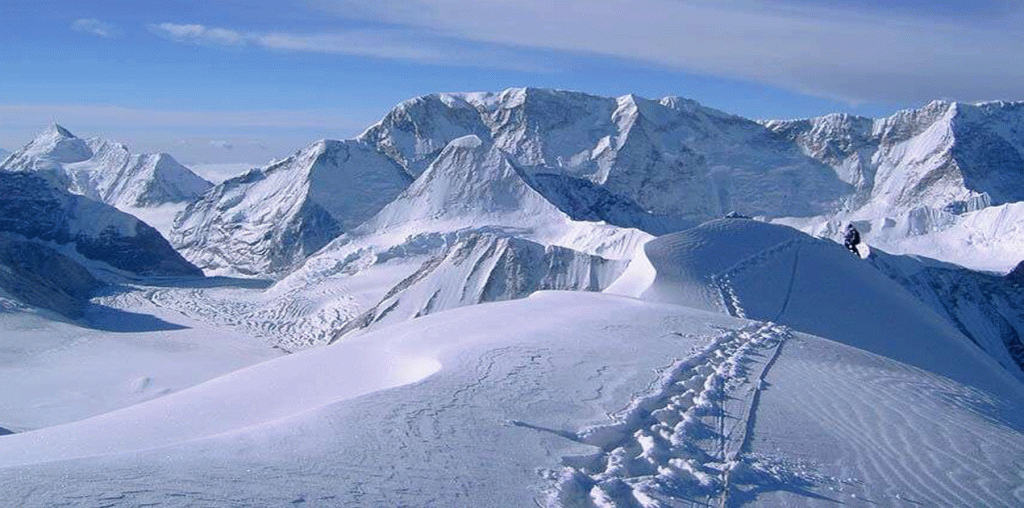
Baruntse Climbing Expedition is Best For?
The Baruntse Climbing Expedition is ideal for mountaineers who are ready to take the next step beyond trekking peaks and want to experience a true high-altitude expedition without the overwhelming crowds of Everest. While challenging, it offers a perfect balance of technical climbing, high-altitude exposure, and remote Himalayan adventure.
1. Experienced Climbers Progressing Beyond Trekking Peaks
Baruntse is best suited for climbers who have already summited peaks like Mera Peak, Island Peak, or Lobuche East and are ready to challenge themselves on a more demanding 7,000-meter expedition. It provides the skills and endurance needed for progression to 8,000-meter giants.
2. Mountaineers Training for Everest and Other 8,000m Peaks
With its altitude of 7,129m, steep ice sections, and exposed ridges, Baruntse is often considered a stepping stone to Everest, Makalu, or Lhotse. The expedition mirrors many of the conditions found on higher peaks, making it an excellent training ground for future Himalayan climbs.
3. Climbers Seeking a Remote and Less-Crowded Expedition
Unlike Everest or Ama Dablam, Baruntse offers a more peaceful and isolated climbing experience. Adventurers who value solitude, raw Himalayan beauty, and an authentic sense of exploration will find Baruntse deeply rewarding.
4. Physically and Mentally Strong Mountaineers
Due to its long duration (30–35 days), remote location, and technical demands, Baruntse is best for climbers with strong endurance, fitness, and mental resilience. Those who enjoy challenging themselves in difficult conditions will thrive here.
5. Adventure Seekers Wanting a Serious Achievement
Summiting Baruntse is not only excellent preparation for higher mountains but also a prestigious accomplishment in its own right. It stands as one of Nepal’s most respected expedition peaks, offering both challenge and immense reward.
In short: Baruntse is best for ambitious climbers seeking a serious 7,000m expedition, training for Everest, or desiring a remote, technical, and highly rewarding Himalayan experience.
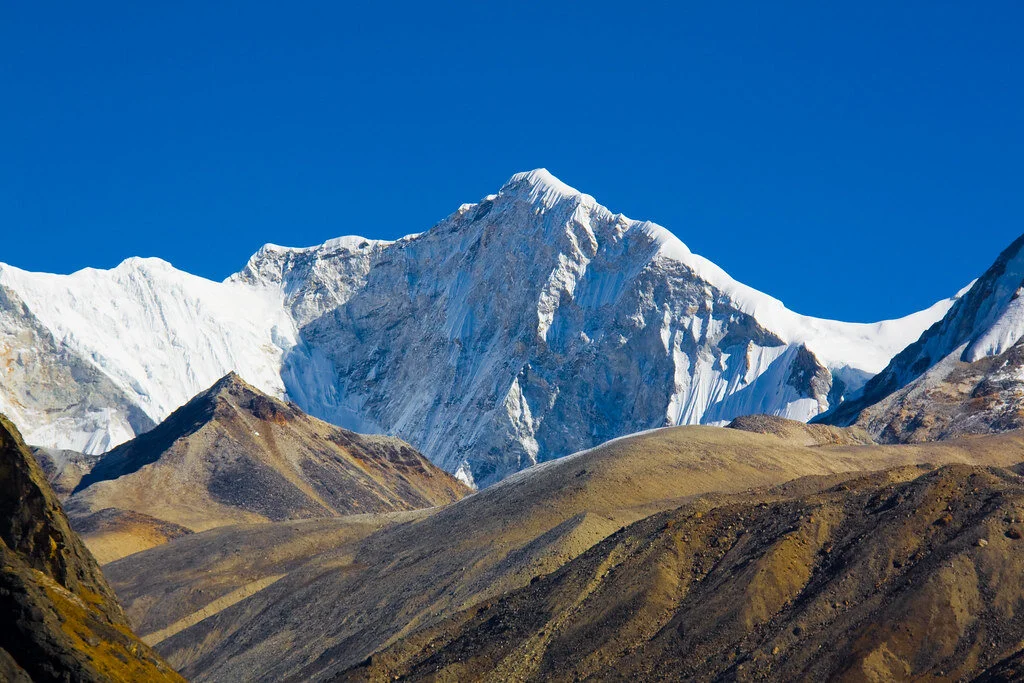
What are the Facilities You Can Expect During the Baruntse Expedition?
While Baruntse is a remote and demanding expedition peak, climbers can still expect a well-organized blend of essential mountaineering support, comfortable logistics, and safety-focused facilities throughout the journey. These facilities are designed to provide balance between the raw adventure of a 7,000m climb and the necessary comfort to help climbers stay strong and focused.
1. Accommodation on the Trek
During the approach through the Hinku Valley, climbers typically stay in a combination of teahouses and tented camps. Teahouses in lower villages offer simple but comfortable lodging with beds, blankets, and meals, while higher up, camping becomes the primary option due to remoteness. Spacious expedition tents are provided, ensuring privacy and shelter in challenging conditions.
2. Comfortable Base Camp Setup
At Baruntse Base Camp, climbers can expect a fully equipped campsite with large sleeping tents, dining tents, kitchen tents, and toilet facilities. Dining tents often come with chairs, tables, solar lighting, and a social space where climbers and staff gather. The kitchen team prepares hot meals daily, providing a balance of Nepali and Western food to maintain energy and morale.
3. Meals and Nutrition
Nutritious meals are a key part of the expedition. At lower altitudes, meals include rice, lentils, vegetables, noodles, soups, and fresh fruits, while at higher camps, lighter, high-calorie foods are served, often supplemented with dehydrated meals, energy bars, and soups to suit the high-altitude environment. Hot drinks like tea, coffee, and soup are available throughout to keep climbers warm and hydrated.
4. Climbing Camps on the Mountain
Above base camp, climbers establish multiple higher camps (Camp I, II, and sometimes III) depending on conditions. These are equipped with high-altitude tents, sleeping mats, and stoves for melting snow. Sherpa support helps set up these camps, carry loads, and fix ropes on technical sections, ensuring safety and efficiency.
5. Professional Sherpa and Guiding Support
Highly experienced Sherpa climbers and guides are an integral part of the expedition. They provide route fixing, rope handling, glacier navigation, and summit guidance. Their expertise greatly increases the chances of a safe and successful ascent.
6. Safety and Communication Systems
Base camp is usually equipped with satellite phones, radios, and solar charging facilities to maintain communication between climbing teams and Kathmandu support. Medical kits, oxygen cylinders, and Gamow bags (portable altitude chambers) are often available at base camp for emergencies. Sherpa guides monitor climbers’ health and provide advice on acclimatization.
7. Porter and Yak Support
During the trek-in, porters and yaks carry expedition equipment, food supplies, and tents, allowing climbers to focus on trekking and conserving energy for the climb itself.
8. Personal Comfort and Extras
Many expeditions also provide extras such as hot water for washing, solar showers, solar charging stations for electronics, and cozy dining setups at base camp. These small comforts make a huge difference in maintaining morale during a long expedition.
In summary: During the Baruntse Expedition, you can expect a well-managed expedition setup including teahouse/camping accommodations, a fully equipped base camp, nutritious meals, professional Sherpa support, safety systems, and high-altitude logistics. These facilities strike a balance between necessary comfort and the raw adventure of tackling a remote 7,000m peak.
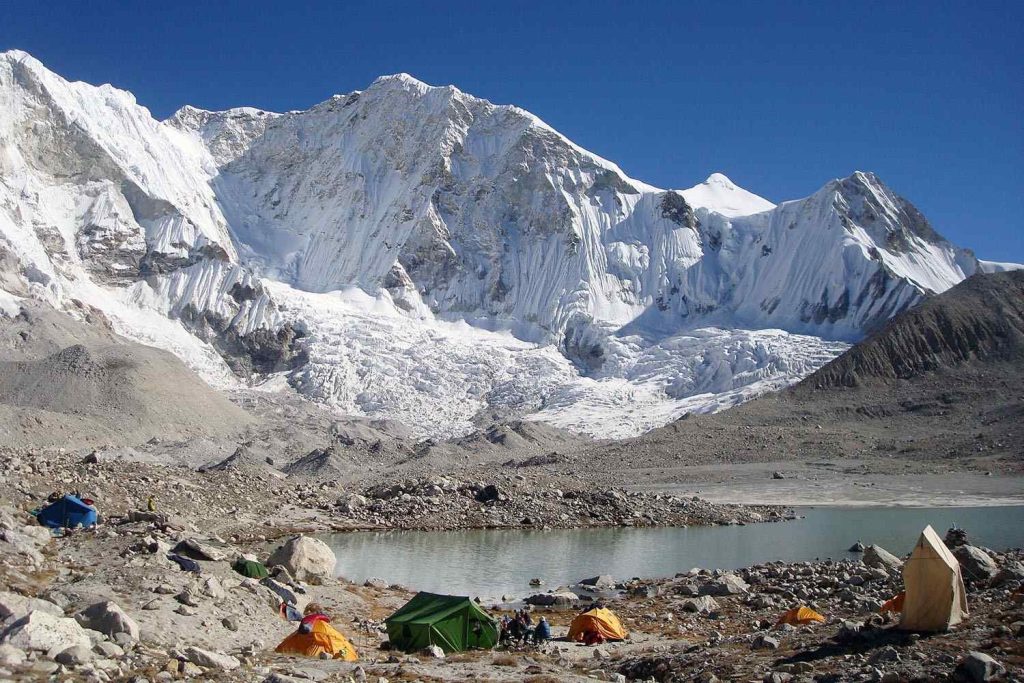
Planning & Preparation Required for the Baruntse Expedition
Climbing Baruntse (7,129m) is a serious mountaineering challenge that demands careful planning, strong physical conditioning, and technical readiness. Unlike trekking peaks, Baruntse requires a full expedition-style approach with higher risks, remote logistics, and extended duration. Proper preparation not only increases the chance of a successful summit but also ensures safety throughout the journey.
1. Physical Fitness and Training
Baruntse is a strenuous climb, requiring endurance, strength, and stamina. Climbers should undergo at least 6–12 months of training prior to the expedition. Preparation should include:
- Cardio training: Long hikes, running, cycling, and swimming to build stamina.
- Strength training: Focus on legs, core, and upper body to handle steep climbs and heavy packs.
- Endurance hikes: Multi-day treks carrying weighted backpacks to simulate expedition conditions.
- Altitude training (if possible): High-altitude treks or climbs above 4,000–5,000m before the expedition.
2. Technical Skills
Baruntse involves steep ice slopes, glacier travel, and rope techniques. Prior training is essential in:
- Using crampons and ice axe efficiently on snow and ice.
- Ascending and descending fixed ropes with jumars, descenders, and safety knots.
- Glacier travel skills including ladder crossings and crevasse rescue techniques.
- Comfort with exposure on ridges and steep ice walls.
3. High-Altitude Experience
Climbers are strongly advised to have previous Himalayan or equivalent high-altitude experience, ideally summits above 6,000m such as Island Peak, Mera Peak, or Lobuche East. This ensures familiarity with altitude-related challenges and expedition-style living.
4. Mental Preparation
A 30–35 day expedition in a remote region requires patience, adaptability, and mental toughness. Climbers must be ready for:
- Unpredictable weather delays.
- Living in tents for extended periods.
- Long summit days (10–14 hours of climbing).
- Remaining motivated despite fatigue, cold, and uncertainty.
5. Equipment and Gear
A full set of mountaineering gear is required, including:
- Double or triple insulated boots suitable for 7,000m+ peaks.
- Crampons, ice axe, harness, helmet, ascenders, descenders, carabiners.
- Down suit or layered down clothing for extreme cold.
- Expedition sleeping bag (-30°C or lower rating).
- High-quality tent gear for higher camps.
- Headlamps, thermal gloves, goggles, and gaiters.
Expedition operators typically provide group gear such as tents, ropes, ladders, cooking equipment, and fixed-line setup, while climbers bring personal gear.
6. Acclimatization Plan
The expedition includes a carefully staged ascent with acclimatization rotations between camps. Climbers must follow this plan strictly to reduce the risk of AMS (Acute Mountain Sickness), HAPE, or HACE. Hydration, nutrition, and pacing are vital.
7. Permits and Documentation
Climbing Baruntse requires several official documents:
- Climbing Permit from the Nepal Mountaineering Association (NMA).
- Trekking permits for the Hinku Valley region.
- TIMS (Trekkers’ Information Management System) card.
- Proof of mountaineering insurance covering high-altitude rescue.
8. Timeframe & Best Seasons
Baruntse is usually attempted during spring (April–May) and autumn (September–November) when weather is most stable. Climbers should allocate at least 30–35 days for the entire expedition, including trekking, acclimatization, climbing, and return.
9. Choosing the Right Expedition Operator
Since Baruntse is remote and technically demanding, choosing an experienced and reliable operator is critical. Look for companies with proven safety records, professional Sherpa support, quality logistics, and flexible contingency planning.
In summary: Successful planning for Baruntse requires intense physical training, technical climbing skills, previous altitude experience, quality gear, and strong mental resilience. Proper permits, a realistic timeframe, and choosing a trusted operator are equally important to ensure safety and success on this challenging 7,000m Himalayan peak.
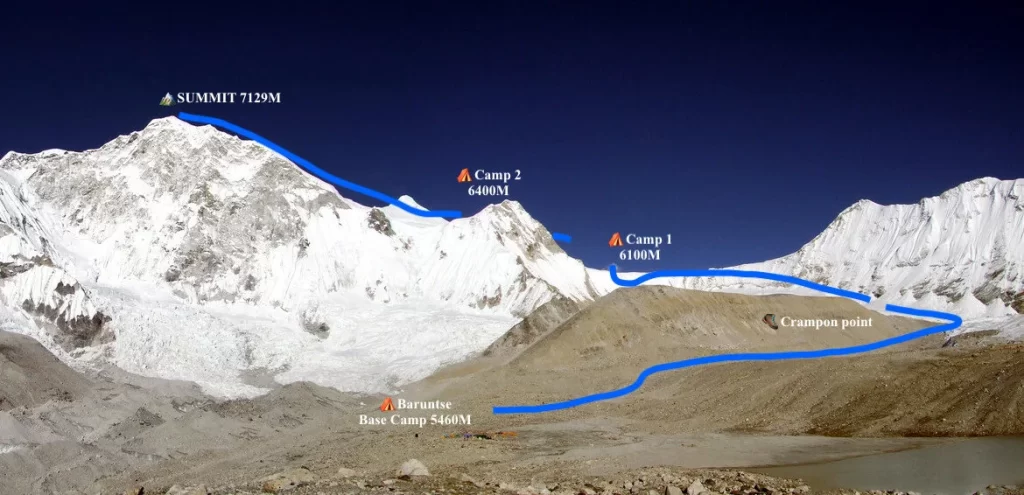
Permits & Documentation Required for Baruntse Peak Expedition
Climbing Baruntse (7,129m) requires several official permits and documents issued by the Government of Nepal. These permits help regulate climbing in the Himalayas, support local conservation, and ensure that mountaineering activities are properly managed. Having the right documentation in place is essential before beginning the expedition.
1. Baruntse Climbing Permit
- Issued by the Nepal Mountaineering Association (NMA), which oversees peaks between 6,500m and 7,000m+ in Nepal.
- The climbing permit is mandatory for all climbers attempting Baruntse.
- The cost varies depending on the season:
- Spring (March–May): USD 500 per climber
- Autumn (September–November): USD 250 per climber
- Winter & Summer (December–February / June–August): USD 125 per climber
2. Makalu–Barun National Park Entry Permit
- Baruntse lies within the Makalu–Barun National Park, a protected area known for its biodiversity.
- All climbers and trekking staff need a park entry permit.
- Fee: NPR 3,000 (approx. USD 25) per person.
3. Local Area Permit (Rural Municipality Fee)
- Required by the Khumbu Pasang Lhamu Rural Municipality or local authorities in the approach region.
- Supports local development and community projects.
- Fee: Around USD 20–30 per person (varies).
4. Trekker’s Information Management System (TIMS) Card
- Issued by the Nepal Tourism Board (NTB) and trekking agencies.
- Tracks trekkers for safety and record-keeping.
- Fee: USD 20 per person for group trekkers (higher for independent trekkers).
5. Expedition Garbage Deposit
- To encourage environmental responsibility, the Government of Nepal requires a refundable garbage deposit (usually USD 500 per expedition group).
- This is refunded once the team demonstrates proper waste disposal at the end of the climb.
6. Personal Documents & Insurance
- A valid passport with visa for Nepal.
- Passport-sized photographs (needed for permits).
- Comprehensive mountaineering insurance, including helicopter rescue coverage up to 7,500m altitude. This is mandatory for both climbers and support staff.
In summary: To climb Baruntse, you will need the Baruntse Climbing Permit, National Park Entry Permit, Local Area Permit, TIMS Card, and Garbage Deposit, along with valid personal documents and insurance. Expedition operators usually handle these permits on behalf of climbers, but every participant must ensure their documents and insurance are complete before departure.
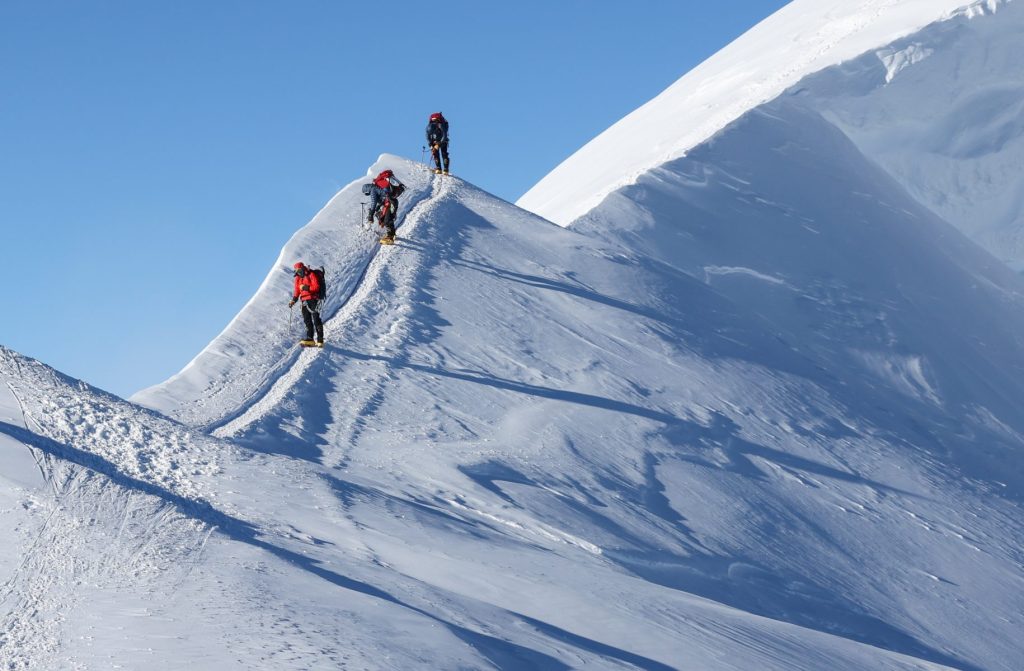
FAQs- Baruntse Expedition: Complete Guide, Cost and Permits Detail
1. What is the height of Baruntse?
Baruntse stands at 7,129 meters (23,386 feet) in the eastern Nepal Himalayas.
2. What is the best season to climb Baruntse?
The best climbing seasons are spring (April–May) and autumn (September–November), when the weather is relatively stable and snowfall is minimal.
3. How long does the Baruntse Expedition take?
The full expedition typically lasts 30–35 days, including trekking, acclimatization, climbing rotations, and return to Kathmandu.
4. How difficult is climbing Baruntse?
Baruntse is moderately difficult to hard, requiring previous experience on 6,000m+ peaks, good physical fitness, technical climbing skills, and high-altitude experience.
5. Who is eligible to climb Baruntse?
Experienced mountaineers with prior high-altitude climbs (like Mera Peak or Island Peak) and proper technical training are best suited. Climbers should also be physically fit and mentally prepared for remote, challenging conditions.
6. What permits are required for Baruntse?
Climbers need the Baruntse Climbing Permit, Makalu–Barun National Park Entry Permit, Local Area Permit, TIMS card, and a refundable garbage deposit. A valid passport, visa, and mountaineering insurance are also mandatory.
7. What kind of support is provided during the expedition?
Professional Sherpa guides, high-altitude porters, base camp staff, and cooks provide full support. Expedition operators typically handle logistics, fixed ropes, camp setup, and meals.
8. What type of accommodation can climbers expect?
- Trek-in: Teahouses or lodges in villages
- Base Camp & Higher Camps: Expedition-style tents with sleeping mats and dining facilities
9. Is special gear required?
Yes, climbers must bring mountaineering boots, crampons, ice axe, harness, helmet, down clothing, sleeping bag, and other high-altitude equipment. Operators usually provide communal gear like tents, ropes, and ladders.
10. How much does a Baruntse Expedition cost?
Full-service expeditions typically range between $7,000 and $13,000 USD, depending on inclusions, season, and level of luxury. This covers guides, Sherpa support, permits, accommodation, and meals.
11. Is Baruntse safe to climb?
While Baruntse is considered safer than 8,000-meter peaks, risks include avalanches, crevasses, steep ice slopes, altitude sickness, and sudden weather changes. Proper preparation, professional support, and adherence to acclimatization schedules are crucial.
12. Can beginners attempt Baruntse?
No, Baruntse is not suitable for beginners. Climbers should have experience on high-altitude trekking or climbing peaks above 6,000 meters.
13. Can Baruntse be used as training for Everest?
Yes, many climbers use Baruntse as a stepping stone to 8,000-meter peaks. It provides technical experience, high-altitude exposure, and remote expedition practice.
14. How physically demanding is Baruntse?
Extremely demanding. Climbers must endure long trekking days, heavy packs, cold weather, technical climbing, and summit pushes that can take 10–14 hours. High endurance and fitness are essential.
15. How remote is Baruntse?
Baruntse is very remote. The trek-in through Hinku Valley is less crowded than Everest or other peaks, which offers solitude but also requires thorough logistical planning.
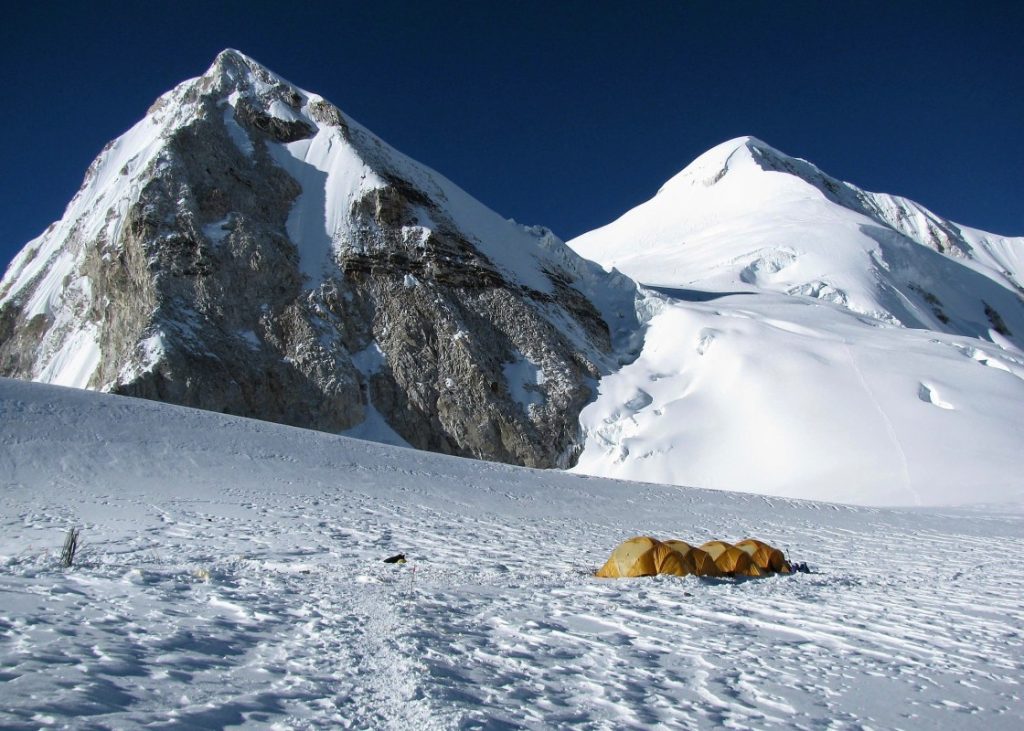
Conclusion- Baruntse Expedition: Complete Guide, Cost and Permits Detail
The Baruntse Expedition offers mountaineers a rare opportunity to experience the grandeur, challenge, and serenity of Nepal’s eastern Himalayas. Standing at 7,129 meters, Baruntse combines the thrill of technical climbing with the rewards of high-altitude adventure, making it ideal for experienced climbers seeking more than a trekking peak. Its remote location, panoramic views of Everest, Makalu, and Lhotse, and challenging ice slopes create an expedition that tests both physical endurance and mental resilience.
Unlike more crowded peaks, Baruntse provides a peaceful and authentic Himalayan experience. The trek through the Hinku Valley, sacred lakes, and traditional Sherpa villages immerses climbers in Nepal’s rich culture and natural beauty. With proper planning, technical skills, and professional support from experienced Sherpas, climbers can safely navigate glaciers, steep ice walls, and high-altitude conditions while enjoying well-organized base camps and expedition facilities.
For adventurers looking to bridge the gap between trekking peaks and 8,000-meter giants like Everest, Baruntse is an ideal choice. It serves not only as a prestigious climb in its own right but also as an excellent training ground for future high-altitude expeditions. In essence, the Baruntse Expedition is a perfect blend of challenge, accomplishment, and Himalayan wonder, offering memories and experiences that last a lifetime.














